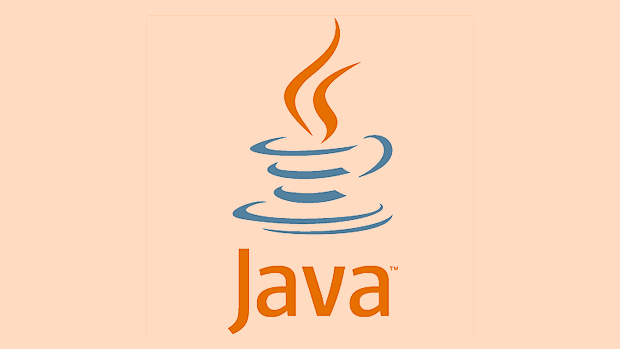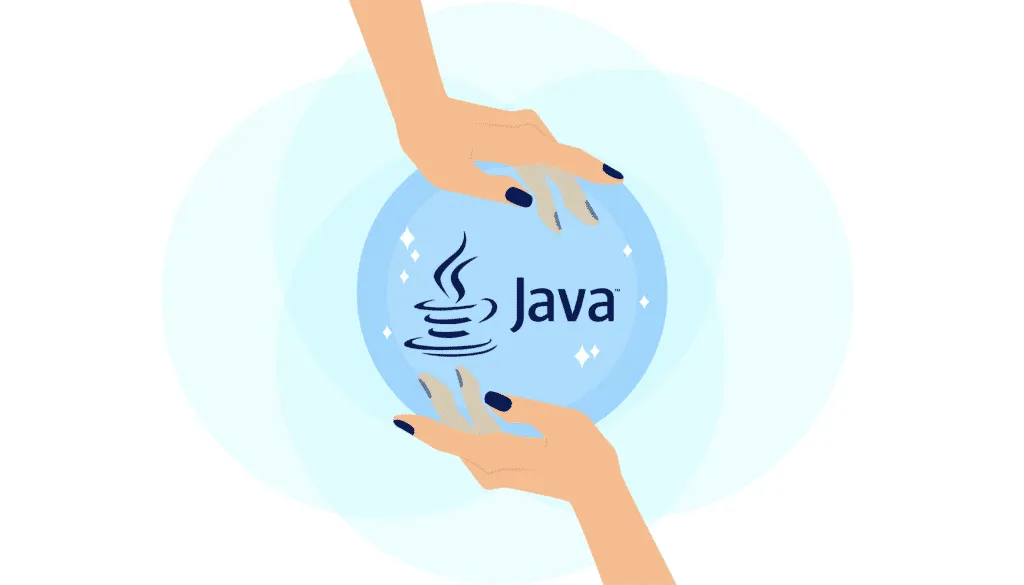Java 8 and subsequent versions have introduced a number of key features, significantly improving the simplicity, security and maintainability of the code. 1. Lambda expressions allow functions to be passed as parameters, simplifying the redundant writing of anonymous internal classes, and are suitable for the implementation of functional interfaces; 2. The Stream API supports declarative processing of collection data, and improves data processing capabilities through operation chains such as filters and maps, but attention should be paid to performance and simple logic scenarios; 3. The Optional class reduces null pointer exceptions by explicitly processing possible missing values, and is recommended for return types rather than construction or setting methods; 4. The interface defaults and static methods enhance the expansion ability of the interface, avoid destroying existing implementations, and is suitable for adding compatibility methods or tool methods; 5. Records automatically generate equals, hashCode and other methods, which are suitable for immutable data models, simplifying POJO definitions; 6. instanceof pattern matching reduces redundant code for type conversion, and improves code readability. These features together promote Java to develop in a more modern and efficient direction.

Java 8 was a major turning point for the language, introducing features that changed how developers write code. And since then, Java has kept evolving with each new version bringing more modern capabilities. If you're working with Java today—especially in enterprise environments or large-scale applications—understanding these modern features can make your code cleaner, safer, and easier to maintain.

Here's a breakdown of some key Java 8 language features that are worth getting comfortable with.

1. Lambda Expressions (Java 8)
Lambda expressions let you treat functionality as a method argument, or “pass code” like data. They're especially useful when working with collections or event handling.
Before Java 8, if you wanted to pass behavior into a method (like sorting a list), you'd have to create an anonymous inner class. With lambdas, it's much cleaner:

// Before: using anonymous class
List<String> names = Arrays.asList("John", "Anna", "Mike");
Collections.sort(names, new Comparator<String>() {
public int compare(String a, String b) {
return a.compareTo(b);
}
});
// After: using lambda
Collections.sort(names, (a, b) -> a.compareTo(b));Tips:
- Use lambdas when implementing functional interfaces (interfaces with one abstract method).
- Don't overuse them in complex logic—it can hurt readability.
- Combine them with
Stream APIfor powerful data processing.
2. Stream API (Java 8)
The Stream API allows you to process sequences of elements declaratively. It works well with collections and support operations like filtering, mapping, and reducing.
For example, if you want to filter a list of numbers and get only even ones:
List<Integer> numbers = Arrays.asList(1, 2, 3, 4, 5, 6);
List<Integer> evens = numbers.stream()
.filter(n -> n % 2 == 0)
.collect(Collectors.toList());What to know:
- Streams are not collections—they're wrappers around data sources.
- You can chain operations (
filter,map,sorted) easily. - Intermediate operations (like
filter) are lazy; they don't run until a terminal operation (likecollect) is called.
Use streams when:
- You need to transform or filter data in a collection.
- You want to express intent clearly (eg, "find all users over 30").
Avoid streams when:
- Performance is critical (they add overhead).
- The logic is very simple—sometimes a loop is clearer.
3. Optional Class (Java 8)
Optional<T> helps reduce null pointer exceptions by making it clear when a value may be absent. Instead of returning null , you return an Optional .
Optional<String> maybeName = getNameById(123);
maybeName.ifPresent(name -> System.out.println("Found name: " name));How to use it:
- Use
Optional.ofNullable()when the value might be null. - Avoid calling
.get()without checking.isPresent(). - Don't return
Optionalfrom setters or constructors—it's meant for return types.
It's good practice to:
- Return
Optionalfrom methods that might not find a result. - Chain operations using
map,flatMap, ororElse.
4. Default and Static Methods in Interfaces (Java 8)
Before Java 8, interfaces could only declare methods—not provide implementations. Now, you can define default and static methods directly in interfaces.
public interface Logger {
void log(String message);
default void logWithTimestamp(String message) {
System.out.println(LocalDateTime.now() ": " message);
}
static Logger getDefaultLogger() {
return msg -> System.out.println(msg);
}
}This makes it easier to evolve interfaces without breaking existing implementations. It also enables utility-like behavior inside interfaces.
When to use:
- Add backward-compatible methods to existing interfaces.
- Provide common utility methods in an interface (as static methods).
Just remember:
- Default methods can cause conflicts if two interfaces define the same one—you'll need to resolve them manually.
- Don't overdo it—keep interfaces focused on behavior.
5. Records (Java 16)
Records are a concise way to model immutable data classes. They automatically generate equals() , hashCode() , toString() , and accessors.
Instead of writing this:
public class Person {
private final String name;
private final int age;
public Person(String name, int age) {
this.name = name;
this.age = age;
}
// getters, equals, hashCode, toString...
}You can just do:
public record Person(String name, int age) {}Key points:
- Records are final and cannot be extended.
- They're perfect for DTOs, data models, or any case where you need a simple immutable object.
- You can still add custom methods or validation logic if needed.
6. Pattern Matching for instanceof (Java 16)
Before Java 16, you had to cast after checking type:
if (obj instanceof String) {
String s = (String) obj;
System.out.println(s.length());
}Now you can combine the check and cast:
if (obj instanceof String s) {
System.out.println(s.length());
} This reduces boilerplate and improves readability. It also works with switch patterns in newer versions.
Modern Java gives you tools to write more expressive and less error-prone code. While you don't need to use every feature right away, understanding what's available—and when to use it—can help you write better software. Some features like records or pattern matching feel small but make a noticeable difference once you start using them regularly.
Basically that's it.
The above is the detailed content of Exploring Modern Java 8 Language Features. For more information, please follow other related articles on the PHP Chinese website!

Hot AI Tools

Undress AI Tool
Undress images for free

Undresser.AI Undress
AI-powered app for creating realistic nude photos

AI Clothes Remover
Online AI tool for removing clothes from photos.

Clothoff.io
AI clothes remover

Video Face Swap
Swap faces in any video effortlessly with our completely free AI face swap tool!

Hot Article

Hot Tools

Notepad++7.3.1
Easy-to-use and free code editor

SublimeText3 Chinese version
Chinese version, very easy to use

Zend Studio 13.0.1
Powerful PHP integrated development environment

Dreamweaver CS6
Visual web development tools

SublimeText3 Mac version
God-level code editing software (SublimeText3)

Hot Topics
 Difference between HashMap and Hashtable?
Jun 24, 2025 pm 09:41 PM
Difference between HashMap and Hashtable?
Jun 24, 2025 pm 09:41 PM
The difference between HashMap and Hashtable is mainly reflected in thread safety, null value support and performance. 1. In terms of thread safety, Hashtable is thread-safe, and its methods are mostly synchronous methods, while HashMap does not perform synchronization processing, which is not thread-safe; 2. In terms of null value support, HashMap allows one null key and multiple null values, while Hashtable does not allow null keys or values, otherwise a NullPointerException will be thrown; 3. In terms of performance, HashMap is more efficient because there is no synchronization mechanism, and Hashtable has a low locking performance for each operation. It is recommended to use ConcurrentHashMap instead.
 What are static methods in interfaces?
Jun 24, 2025 pm 10:57 PM
What are static methods in interfaces?
Jun 24, 2025 pm 10:57 PM
StaticmethodsininterfaceswereintroducedinJava8toallowutilityfunctionswithintheinterfaceitself.BeforeJava8,suchfunctionsrequiredseparatehelperclasses,leadingtodisorganizedcode.Now,staticmethodsprovidethreekeybenefits:1)theyenableutilitymethodsdirectly
 How does JIT compiler optimize code?
Jun 24, 2025 pm 10:45 PM
How does JIT compiler optimize code?
Jun 24, 2025 pm 10:45 PM
The JIT compiler optimizes code through four methods: method inline, hot spot detection and compilation, type speculation and devirtualization, and redundant operation elimination. 1. Method inline reduces call overhead and inserts frequently called small methods directly into the call; 2. Hot spot detection and high-frequency code execution and centrally optimize it to save resources; 3. Type speculation collects runtime type information to achieve devirtualization calls, improving efficiency; 4. Redundant operations eliminate useless calculations and inspections based on operational data deletion, enhancing performance.
 What is an instance initializer block?
Jun 25, 2025 pm 12:21 PM
What is an instance initializer block?
Jun 25, 2025 pm 12:21 PM
Instance initialization blocks are used in Java to run initialization logic when creating objects, which are executed before the constructor. It is suitable for scenarios where multiple constructors share initialization code, complex field initialization, or anonymous class initialization scenarios. Unlike static initialization blocks, it is executed every time it is instantiated, while static initialization blocks only run once when the class is loaded.
 What is the Factory pattern?
Jun 24, 2025 pm 11:29 PM
What is the Factory pattern?
Jun 24, 2025 pm 11:29 PM
Factory mode is used to encapsulate object creation logic, making the code more flexible, easy to maintain, and loosely coupled. The core answer is: by centrally managing object creation logic, hiding implementation details, and supporting the creation of multiple related objects. The specific description is as follows: the factory mode handes object creation to a special factory class or method for processing, avoiding the use of newClass() directly; it is suitable for scenarios where multiple types of related objects are created, creation logic may change, and implementation details need to be hidden; for example, in the payment processor, Stripe, PayPal and other instances are created through factories; its implementation includes the object returned by the factory class based on input parameters, and all objects realize a common interface; common variants include simple factories, factory methods and abstract factories, which are suitable for different complexities.
 What is the `final` keyword for variables?
Jun 24, 2025 pm 07:29 PM
What is the `final` keyword for variables?
Jun 24, 2025 pm 07:29 PM
InJava,thefinalkeywordpreventsavariable’svaluefrombeingchangedafterassignment,butitsbehaviordiffersforprimitivesandobjectreferences.Forprimitivevariables,finalmakesthevalueconstant,asinfinalintMAX_SPEED=100;wherereassignmentcausesanerror.Forobjectref
 What is type casting?
Jun 24, 2025 pm 11:09 PM
What is type casting?
Jun 24, 2025 pm 11:09 PM
There are two types of conversion: implicit and explicit. 1. Implicit conversion occurs automatically, such as converting int to double; 2. Explicit conversion requires manual operation, such as using (int)myDouble. A case where type conversion is required includes processing user input, mathematical operations, or passing different types of values ??between functions. Issues that need to be noted are: turning floating-point numbers into integers will truncate the fractional part, turning large types into small types may lead to data loss, and some languages ??do not allow direct conversion of specific types. A proper understanding of language conversion rules helps avoid errors.
 Why do we need wrapper classes?
Jun 28, 2025 am 01:01 AM
Why do we need wrapper classes?
Jun 28, 2025 am 01:01 AM
Java uses wrapper classes because basic data types cannot directly participate in object-oriented operations, and object forms are often required in actual needs; 1. Collection classes can only store objects, such as Lists use automatic boxing to store numerical values; 2. Generics do not support basic types, and packaging classes must be used as type parameters; 3. Packaging classes can represent null values ??to distinguish unset or missing data; 4. Packaging classes provide practical methods such as string conversion to facilitate data parsing and processing, so in scenarios where these characteristics are needed, packaging classes are indispensable.






